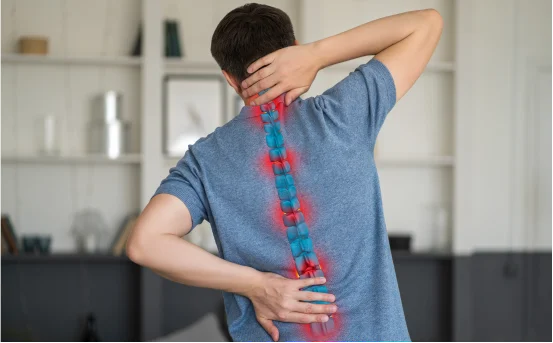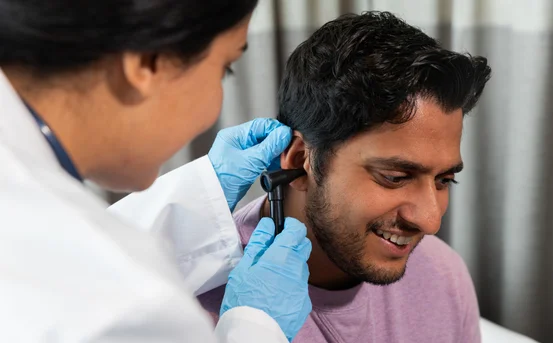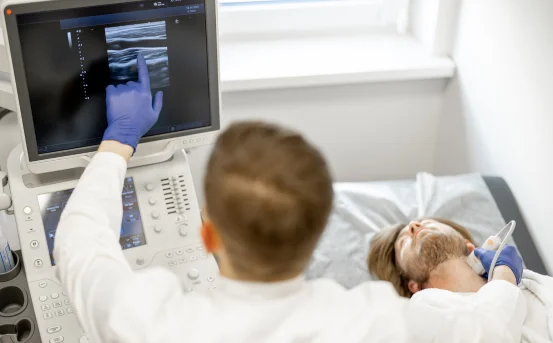Symptoms indicating kyphoplasty surgery is a minimally invasive surgical procedure often recommended to treat painful vertebral compression fractures (VCFs), typically caused by osteoporosis, trauma, or tumors. These fractures can severely affect mobility, posture, and quality of life. But how do you know if you need kyphoplasty surgery? Recognizing the symptoms early can be crucial for timely intervention and faster recovery.
Vertebral compression fractures can lead to intense pain, limited mobility, spinal disease, and a significant reduction in quality of life. That’s where kyphoplasty, a minimally invasive spinal procedure, comes in. Kyphoplasty is designed to treat these fractures by stabilizing the bone, restoring spinal height, and relieving pain often providing near immediate results.
Understanding Kyphoplasty: A Quick Overview
Kyphoplasty is a spine-stabilizing procedure designed to restore the height and shape of collapsed vertebrae and relieve pain. It involves :-
-
Inserting a balloon into the fractured vertebra
-
Inflating the balloon to create space
-
Filling the cavity with bone cement to stabilize the bone
The result is often immediate pain relief and improvement in spinal alignment.
What Causes Vertebral Compression Fractures (VCFs)?
Before identifying symptoms, it’s important to understand the common causes of vertebral compression fractures, as these directly influence the need for kyphoplasty :-
-
Osteoporosis :- The most common cause. Weak, brittle bones are prone to fractures even from minor stress.
-
Trauma :- Falls, accidents, or sports injuries can compress the vertebrae.
-
Spinal tumors or metastases :- Cancer affecting the spine can weaken vertebral bones.
-
Long-term steroid use :- This can lead to bone thinning and fractures.
Now, let’s dive into the telltale signs that suggest kyphoplasty might be necessary.
Top Symptoms Indicating Kyphoplasty Surgery
Sudden, Severe Back Pain
One of the most common symptoms of a vertebral compression fracture is the sudden onset of intense back pain. The pain is usually localized to the mid or lower back and can occur after a minor fall or no obvious cause in osteoporotic patients.
Key indicators :-
-
Pain gets worse with standing or walking
-
Relieved by lying down
-
No significant pain relief with rest or medication
If this pain persists despite conservative treatment like rest, bracing, or pain medications, kyphoplasty may be considered.
Limited Mobility and Daily Activity Interference
When a vertebra collapses, it affects spinal mechanics and posture, often resulting in reduced flexibility and difficulty performing routine tasks.
Warning signs :-
-
Difficulty standing upright or walking long distances
-
Trouble bending, lifting, or twisting
-
Reduced participation in everyday activities due to pain
Patients who struggle with mobility due to spinal fractures may benefit from kyphoplasty, as it helps stabilize the fracture and restore function.
Loss of Height
Vertebral fractures cause the spinal column to shorten. Over time, multiple fractures can result in noticeable height loss.
Pay attention if you :-
-
Have lost more than 1–2 inches in height
-
Notice your clothes fitting differently or sleeves appearing longer
Kyphoplasty helps by re-expanding the collapsed vertebrae using balloon tamp technology, which can partially restore height and prevent further collapse.
Kyphosis or Forward Curving of the Spine
Untreated VCFs may lead to kyphosis, a visible forward curvature or hunchback appearance. This deformity can put pressure on internal organs and further limit mobility.
Signs to watch :-
-
Curved upper back or hump
-
Balance issues due to altered posture
-
Fatigue or breathing difficulty from compression of the lungs
Early intervention with kyphoplasty can halt the progression of spinal deformity and restore spinal alignment.
Persistent Pain Not Responding to Conservative Treatment
Many spinal fractures are initially treated with pain relievers, bed rest, physical therapy, and bracing. If these measures fail to provide relief after several weeks, it may be time to consider surgery.
Indicators include :-
-
Ongoing pain 4–6 weeks after injury
-
Pain that interferes with sleep and work
-
Need for high-dose pain medications
Kyphoplasty offers rapid pain relief for patients who are not responding to non-surgical treatments.
Radiological Evidence of Vertebral Compression
Sometimes, symptoms may be vague, but diagnostic imaging (X-ray, MRI, or CT scan) reveals one or more compressed vertebrae.
Typical findings :-
-
Vertebral body height loss of 15% or more
-
Bone edema on MRI suggesting recent fracture
-
Spinal instability or misalignment
If imaging confirms a recent and symptomatic compression fracture, especially in patients with osteoporosis, kyphoplasty is often an effective treatment option.
Pain Associated with Spinal Tumors
In cancer patients, metastatic tumors often spread to the spine, weakening the bones and causing compression fractures.
Symptoms to note :-
-
Back pain in known cancer patients
-
Neurological symptoms (numbness, tingling, or weakness)
-
Progressive deterioration despite chemotherapy or radiation
Kyphoplasty can stabilize the spine, relieve pain, and improve quality of life in patients with tumor-related fractures.
Who is a Good Candidate for Kyphoplasty?
You may be a candidate if :-
-
You have a confirmed vertebral compression fracture
-
Pain has persisted for more than 2–3 weeks
-
Non-surgical treatments have failed
-
Imaging supports an acute or subacute fracture
-
There’s no infection, bleeding disorder, or severe neurological compromise
Always consult with a spine specialist or orthopedic surgeon to determine suitability for kyphoplasty.
Benefits of Kyphoplasty Surgery
Kyphoplasty offers several benefits compared to prolonged conservative treatment :-
-
Rapid pain relief (often within 24–48 hours)
-
Improved mobility and quality of life
-
Restored vertebral height and alignment
-
Minimally invasive (small incision, local anesthesia)
-
Short recovery time (often same-day discharge)
When to See a Doctor?
If you experience sudden back pain, especially if you’re over 50 or have osteoporosis, do not ignore it. Seek medical attention if you notice :-
-
Severe, persistent back pain
-
Limited movement or disability
-
Loss of height or spine curvature
-
Weakness or numbness in the legs
Early diagnosis and timely treatment can prevent long-term complications.
Conclusion
Kyphoplasty surgery is a valuable option for individuals suffering from vertebral compression fractures due to osteoporosis, trauma, or spinal tumors. Recognizing the signs early such as sudden back pain, loss of height, kyphosis, or reduced mobility can lead to timely intervention and better outcomes.























